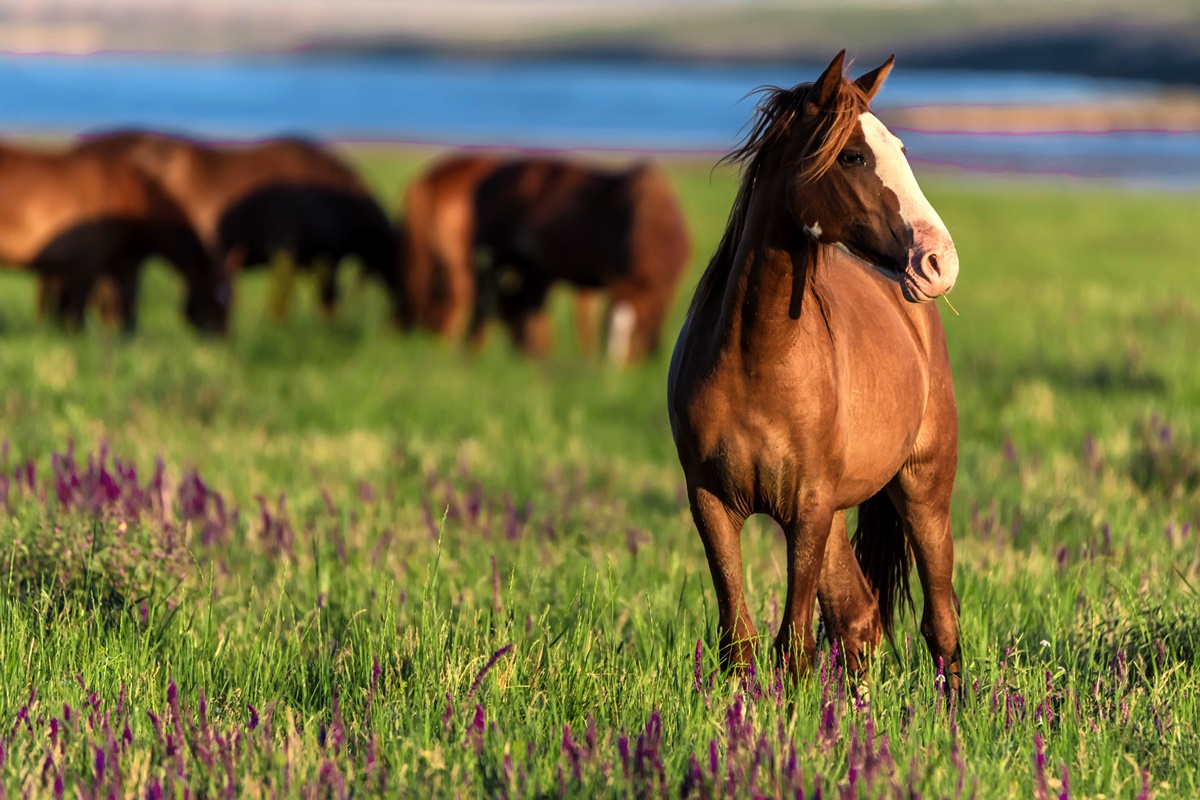
A musztáng mindenki által ismert lófajta (nem csak a "Szilaj" című Disney-animációnak köszönhetően). Ezeket a lovakat szívesen használják az észak-amerikai indiánok. A musztáng szó a spanyol mestengo (vagy mesteño) és mostrenco szavakból származik, amelyeket J. Minsheu angol lexikográfus 1599-ben "kóbor"-nak fordított. Mindkét szó „vadnak, gazdátlannak” nevezte az állatállományt.
"Mustangers" (spanyolul "mesteñeros") cowboyok (vaqueros) voltak, akik vadlovakat fogtak és ültek be későbbi eladás céljából - először Spanyolországban, majd Észak-Amerikában (Mexikó, Texas, Kalifornia).
Vad musztángok – a fajta története
A musztángok a XVI. században Észak-Amerikába hozott lovakból származnak. A spanyol konkvisztádorok magukkal vitték őket, hogy meghódítsák velük az Újvilágot. Az indiánokkal vívott harcot túlélő lovak valószínűleg megszöktek, vagy szándékosan szabadon engedték őket. Hozzájuk csatlakoztak a háziasított lovak, amelyek kiszöktek a karámokból. Valószínűleg előfordulhatott, hogy a vad mének maguk is elcsábították a kancákat. Idővel elterjedtek, jó életkörülményeket találva a füves prérin. A vadonban egyedül birkózott meg mindennel, így hamarosan ismét elvadult.
Az évek során a vadon élő musztángállományok száma nőtt, nem kellett védekezniük természetes ellenségeikkel szemben (alacsony számuk miatt). A spanyol lovak illetve más, a konkvisztádorok által áthozott fajták (beleértve az ibériai lovakat is) összeálltak, és egy új fajtának adták meg a kezdetét.
Ezek a ménesek voltak az indiánok és a cowboyok lovainak forrása. A vadon élő musztángokat szívesen fogták be, alacsony beszerzési költségük illetőleg hihetetlen kitartásuk miatt. Erős lábú ló, amely készen áll a hosszútávú utakra.
Hamarosan megkezdődött a préritermesztés Észak-Amerikában, és megnőtt a szarvasmarha-tenyésztők száma. Hatalmas tanyák jöttek létre, amelyekhez sokkal gyorsabb és nagyobb lovakra volt szükség. Ebben a helyzetben a musztángok természetes ellenségekké és élelmiszer-konkurenciává váltak a szarvasmarhák számára. A musztángokat elkezdték leölni, és a 20. század közepére már csak néhány egyed maradt.
1957 óta létezik méneskönyv ehhez a fajtához. Az American Mustang Association törődik a populáció megőrzésével.
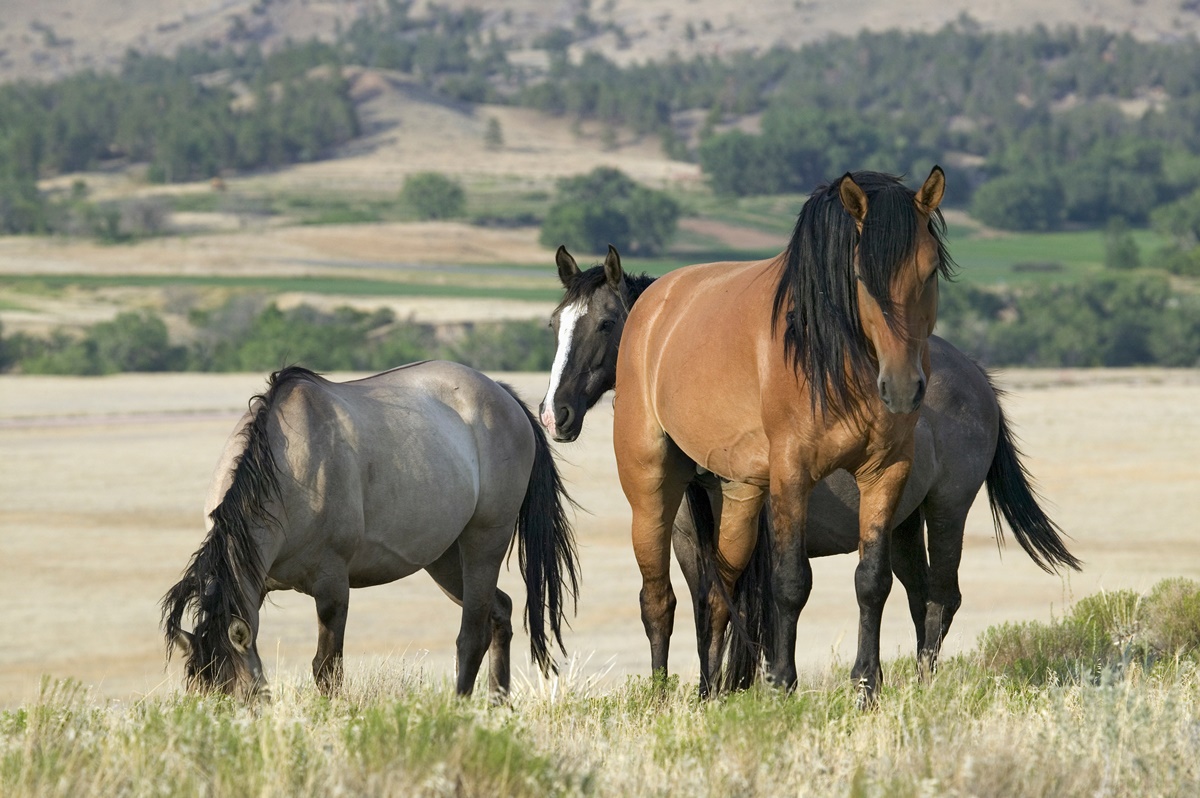
A jelenleg is élő musztángok
A musztángok a XVI. században jelentek meg, de csak 1971-ben ismerte fel az Egyesült Államok Kongresszusa, hogy „a vadon élő, szabadon kóborló lovak és szamarak a Nyugat történelmi és úttörő szellemének élő szimbólumai.” Azóta védettséget élveznek.
Ma a túlélő állományok azok, amelyek Wyomingban, Kaliforniában és Kansasban rezervátumaiban élnek, ahol tenyésztésük is folyik, illetve más ménesek, amelyek emberi beavatkozás nélkül élnek (Nevada, Kalifornia, Oregon, Utah, Montana és Wyoming). Az állatállomány kezelésével az US Bureau of Land Management (BLM – Szövetségi Földfejlesztési Hivatal) -et bízták meg. Az ő feladata ezeknek a lovaknak a védelme illetőleg a populáció felügyelete.
Becslések szerint, 2017 augusztusában a vadon élő musztángok populációja 72 000 darabra nőtt, 2019-ben pedig ez a szám 88 ezer fölé emelkedett. Az említett farmokon további 45 000 állat található. A gyorsan növekvő populáció nagy kihívást jelent, különösen azért, mert az állatok száma hamarosan meghaladhatja a rendelkezésre álló takarmányt. Ennek oka elsősorban ezen állatok kevés természetes ellensége (a farkasok történelmileg ritkák voltak, és jelenleg nem élnek ezeken a területeken). Számukat a már említett BLM szabályozza.
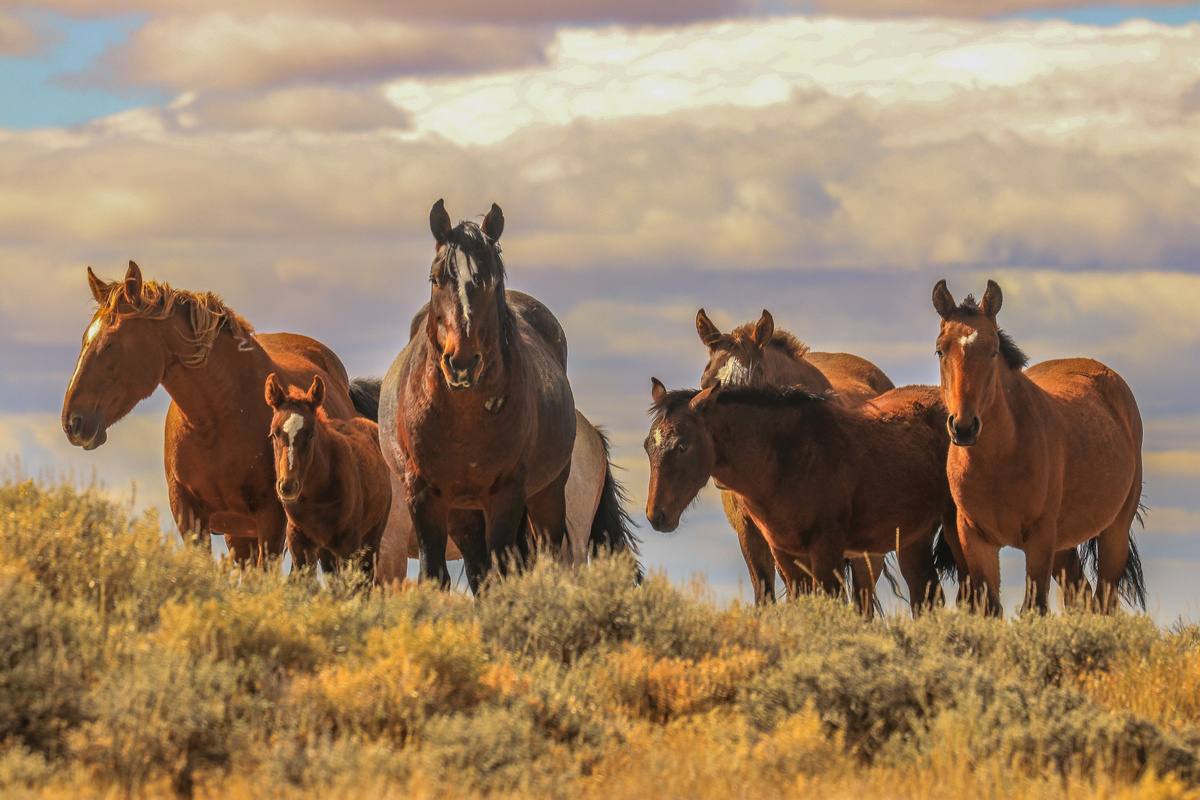
A leggyakrabban használt módszer a túlzott populáció befogása. Sajnos nincsenek konkrét iránymutatások arra vonatkozóan, hogy egy ilyen eljárást hogyan kell végrehajtani. A legtöbb módszer meglehetősen megterhelő az állatok számára, sőt néhol halálos is.
A musztángok elfogására teherautókat, quadokat, helikoptereket és lőfegyvereket használnak a lovak karámokba vagy „csapdákba” való bekergetésére. Ezek a technikák gyakran rendkívüli kimerültséghez, súlyos sérülésekhez és akár halálhoz is vezetnek a musztángoknál. A "csali" csapdák egy másik elterjedt módja a musztángok befogására, általában szénát vagy vizet hagynak az álcázott, elrejtett karámban, miközben a különféle típusú kioldórendszerek bezárják a kapukat a lovak mögött. Egy másik, kevésbé pusztító módszer egy szelíd, betört ló használatát jelenti, amelyet „Júdás lovának” neveznek, és amelyet arra képeztek ki, hogy vadállatokat vezessen a karámba.
A befogott musztángokat magánszemélyeknek ajánlják örökbe – az örökbefogadás után egy évvel lehet igényelni a ló feletti tulajdonjogot. Sajnos az örökbefogadások száma túl kicsi. Korábban csak 125 dolláros díj ellenében volt elérhető, de 2019 márciusa óta az Egyesült Államok 1000 dollárt kínál örökbefogadásért. Azok a lovak, amelyeket nem fogadnak örökbe, olyan farmokra kerülnek, ahol fenn áll annak a veszélye, hogy vágóhídra adják el őket.
A musztáng ló - felépítése
A musztáng jellegzetes felépítése, a szarvas nyakra illesztett, nagy, beejtett fej, kompakt test, csapott far és erős, zömök lábak. Ezeket az állatokat erős paták illetve erősebb fogak jellemzik.
Jelenleg két musztáng vonallal találkozhatunk:
- o nemesebb testalkatú, egy spanyol ló szépségével
- o primitívebb felépítésű, jobban hasonlít a berber lovakra
Marmagasságuk: 135-150 cm
Szín: tulajdonképpen bármilyen színben és változatban előfordulnak
A musztáng átlagos élettartama körülbelül 20 év.
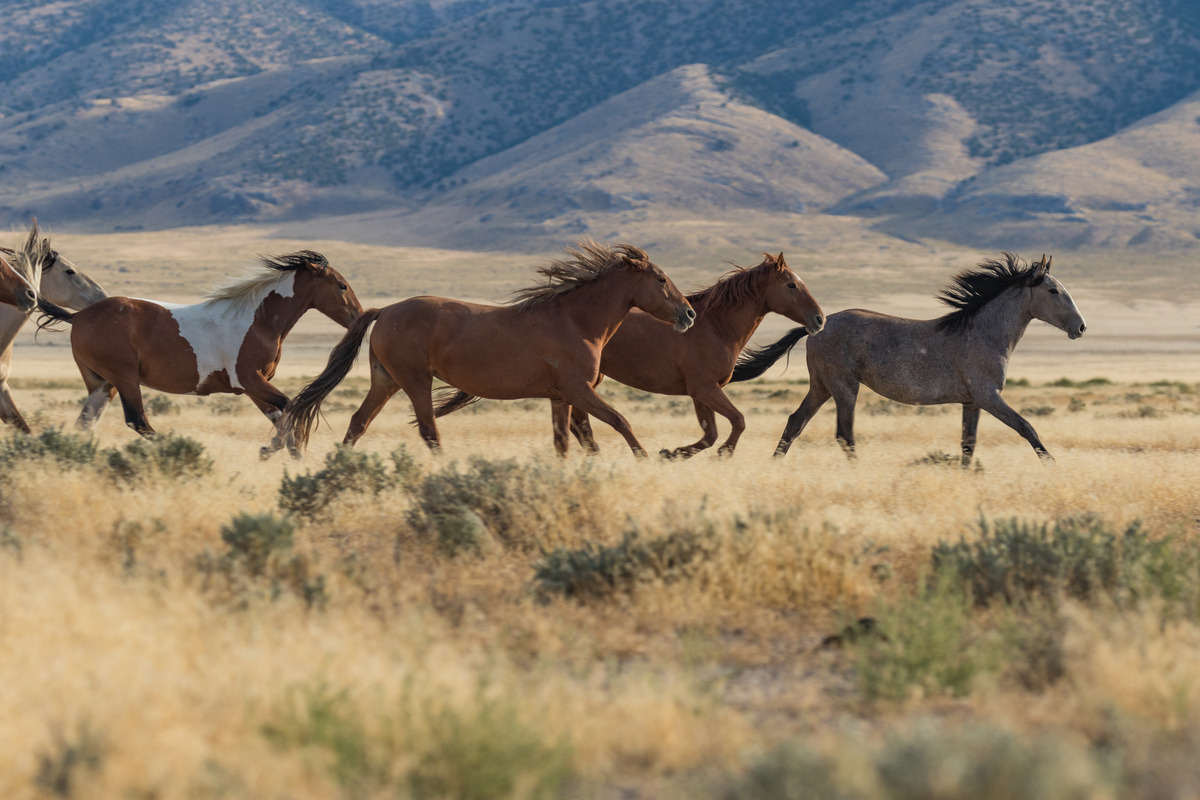
Musztáng – a vadon élő ló
Táplálkozásuk
A musztángok csak növényekkel táplálkoznak - fűvel, gyógynövényekkel, magvakkal és levelekkel. Ezek az állatok hozzájárulnak a növények szétszóródásához (a meg nem emésztett magvak a trágyával együtt kiválasztódnak). Az amerikai prérin élve alkalmazkodtak a nehéz körülményekhez - gyorsabban találnak élelmet illetve vizet (még a befagyott öblökben is).
A ménes élete
Az állomány általában egy kis ménes, amely egy kifejlett ménből és néhány vagy több kancából illetve csikóból áll. Egy kanca általában egy csikót hoz világra. Saját territóriumuk van, ahol mozognak. A musztángok más méneseket is elviselnek, amelyek területe az övékkel határos. Kis falkában gyorsabban mozognak illetőleg könnyebben találnak élelmet. Minden ménesnek megvan a maga vezető kancája, aki veszély esetén biztonságos helyre viszi az egész ménest. A mén pedig ottmarad, és szembenéz a veszéllyel.
Egy kifejlett ménnek (kb. 3 év körüli) el kell hagynia az állományt, hogy létrehozza a sajátját. Ez az a pillanat, amikor más ménekkel harcol a kancákért.
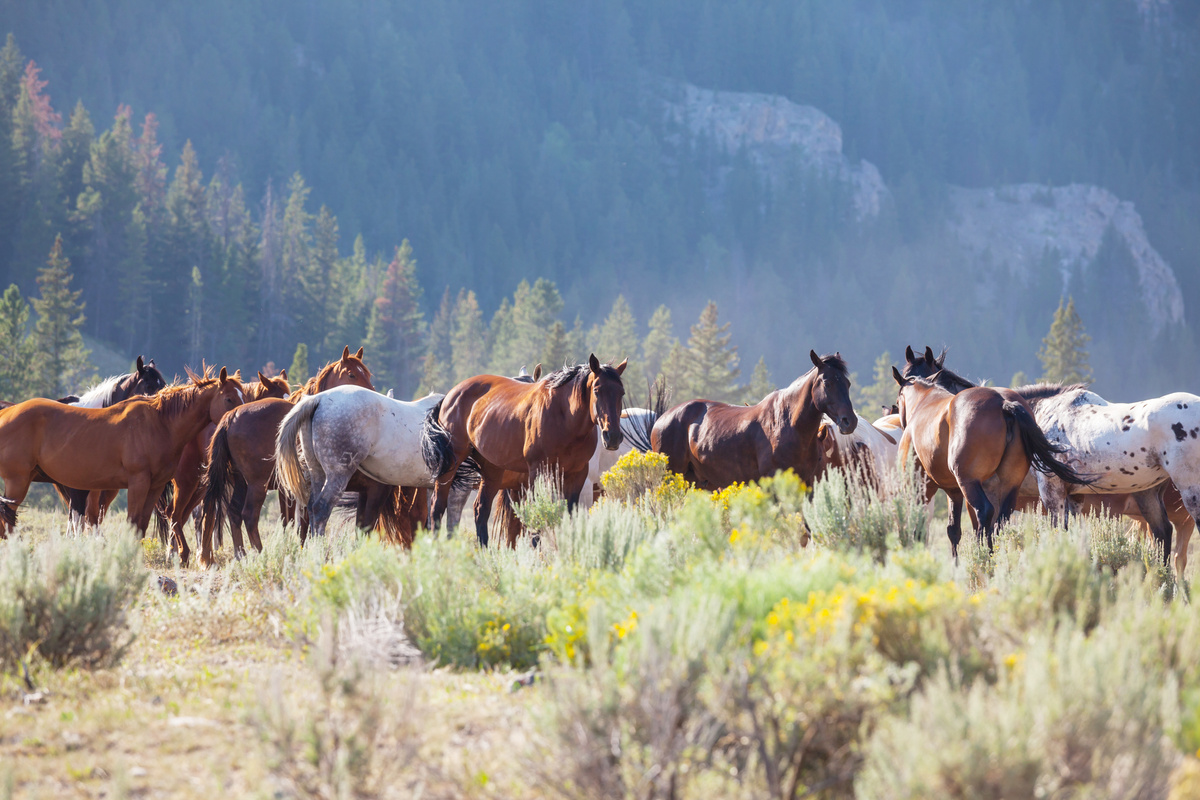
Musztángok - használatuk
Napjainkban egy kellően kiképzett és szeretetben gondozott musztángból csodálatos hátasló válhat. Egy ilyen ló olyan szakágakban jeleskedik, mint a reining, hordókerülő verseny (barrel racing), távlovas verseny és még akár a díjugratás is.
Ismerkedjen meg az összes lófajtával
A musztáng csak egy a sok fajta közül. Ismerkedjen meg más lófajtákkal, amelyekről már írtunk:













